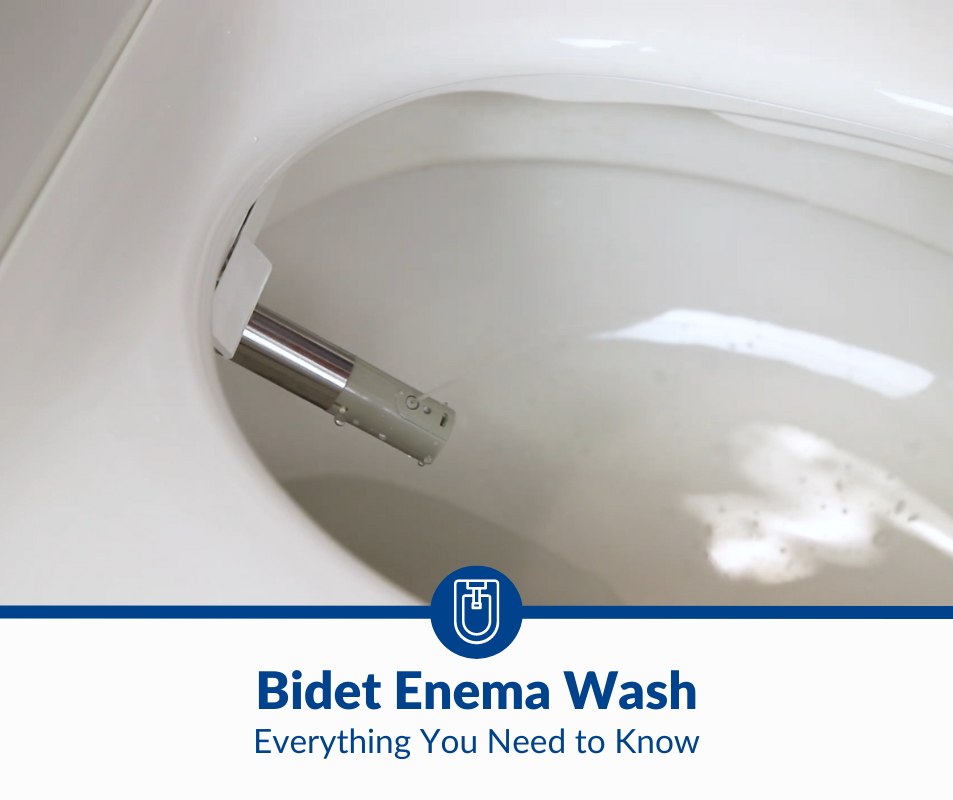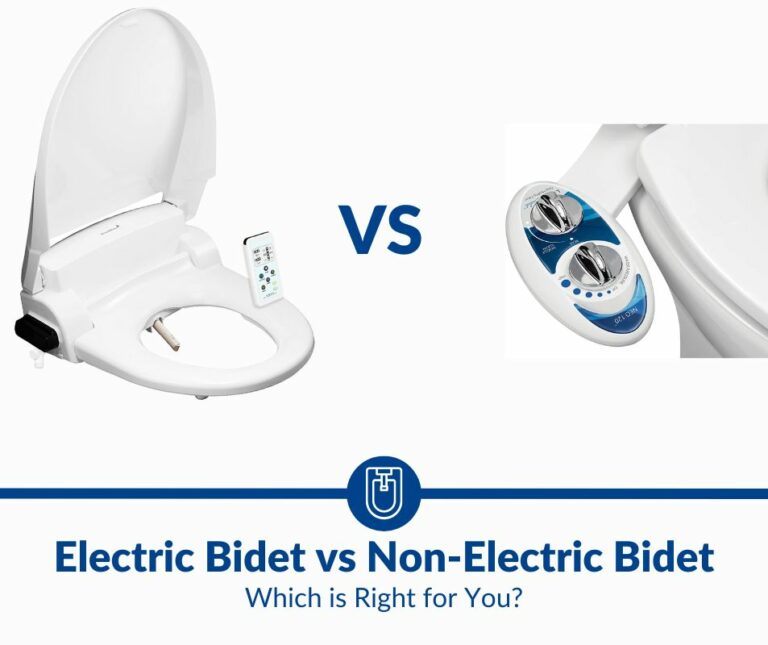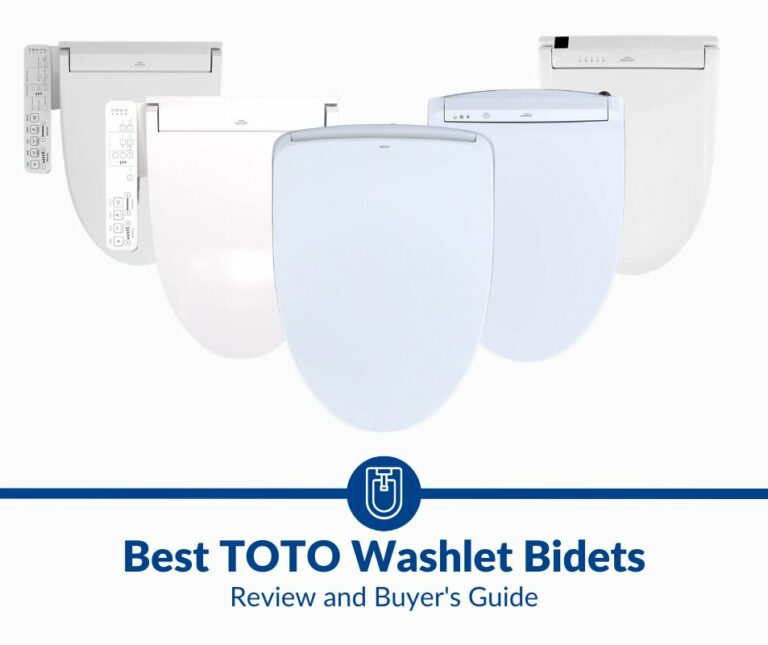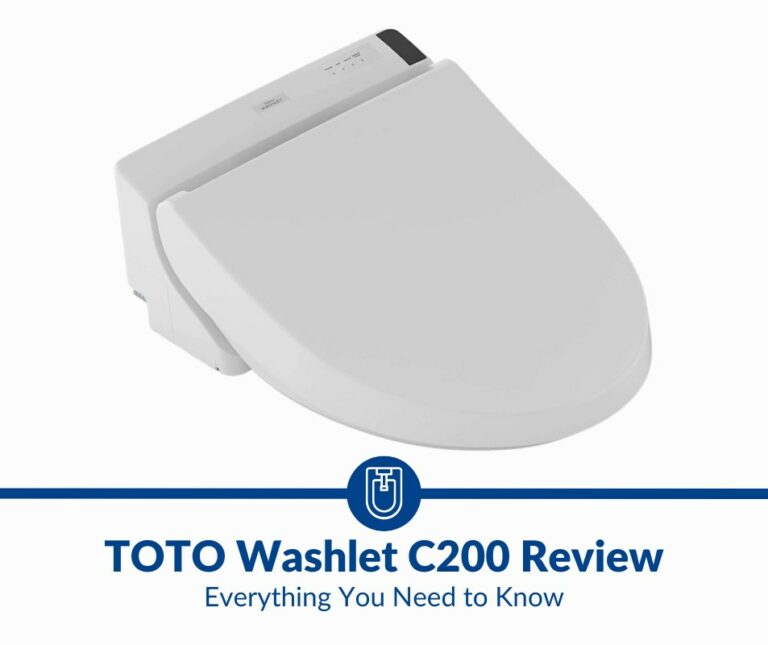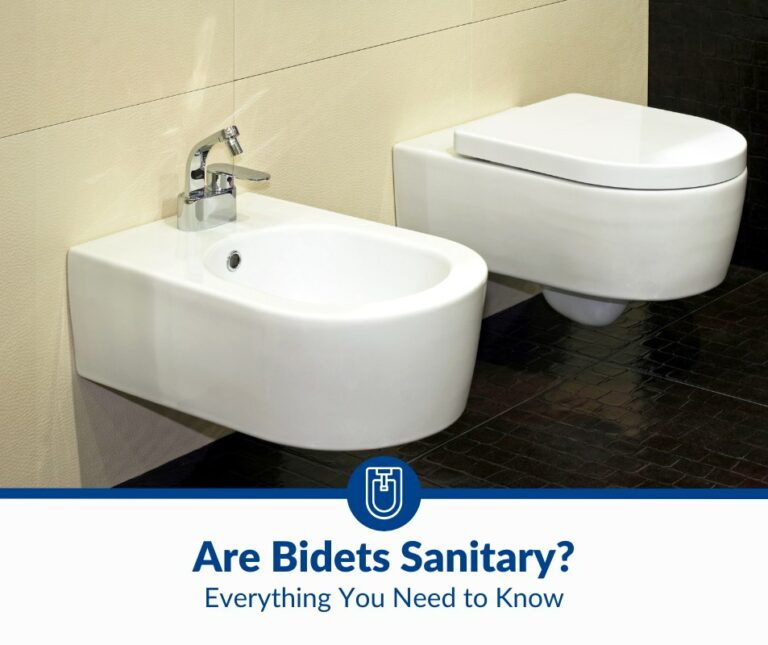Bidet Enema: Everything You Need To Know
Bidets have been popular across Europe for decades, and they’re now becoming more common around the rest of the world. You might be wondering whether or not you can use a bidet as an enema.
You can give yourself an enema by using a handheld bidet with a special nozzle. It’s a safe and tidy procedure once you control the water flow and don’t let it become too strong. Simply place the bidet nozzle into your rectum and slowly turn the water on until you get the right amount of pressure. Also, Some electric bidets have a built-in enema wash feature.
This article will discuss everything you need to know about a bidet enema. Keep reading to learn more about this helpful procedure!
Can You Use a Bidet as an Enema?
If you’re wondering–can a bidet give you an enema?–the answer is yes! You can use a bidet as an enema when constipated to help promote bowel movements, and it should work relatively quickly.
However, there are different types of bidets to be aware of because they won’t all work well as an enema.
Different Types of Bidet for an Enema
The four main types of bidets are:
- Standard unit bidet
- Handheld bidet
- Bidet seat
- Portable bidet
The standard unit bidet is the original bidet that looks like a mini sink or toilet. Since it is a plumbed unit that must be installed professionally into the floor, it’s the most expensive type of bidet. While some households might have these, they’re rare outside Europe.
To use this type of bidet, you must sit over it (as if squatting over a toilet) and point the nozzle toward your rectal area. While these bidets work well for cleaning the area before and after a bowel movement, they don’t work well for enemas.
A handheld bidet is one of the most common bidets you’ll see. They’re generally easy to install without needing the help of a licensed plumber. The holder can be placed on the wall or toilet unit, with the bidet placed within the holder when not in use.
These are the best types to use for enemas because you can buy a bidet enema attachment, which can be safely placed inside the anus. They’re also easy to clean because the attachments are usually stainless steel.
A bidet seat isn’t as standard as a handheld one, but you might still come across it from time to time. It replaces a regular seat and often has different functions.
It’s not possible to hold a bidet seat as you use it. Instead, it is attached to the toilet seat and can be adjusted to your needs. It functions similarly to the standard bidet unit, meaning it can’t be used as an enema.
A portable bidet is handy for traveling or when you may need to wash the anal area with water and don’t have access to a bidet or shower. Like the handheld bidet, you can hold a portable one in your hand while using it if you fill it with water first. There’s usually a pump that releases the water.
While it may be possible to find a portable bidet that can be comfortably inserted into the rectum, most aren’t meant for that. Therefore, a handheld bidet with a special enema nozzle is the best option.
Is a Bidet Enema Safe?
A bidet enema is safe because it only involves water. Once you don’t use soap or other harsh chemicals, you shouldn’t experience any issues.
Not only is a bidet enema safe, but it’s also a highly effective way to treat constipation and discomfort. However, one must ensure the water isn’t too hot before using it because that could cause burns and pain, which certainly won’t help the situation!
Using Bidet as an Enema
Now that you know more about the different types of bidets and how they work, you should know how to use one as an enema. Luckily, the process is quick and straightforward, but you must set aside some time.
Below is a guide on how to use a bidet as an enema.
Choose the Bidet
Firstly, you must choose the right type of bidet. As I mentioned earlier, a handheld bidet is the best choice for an enema, especially one with a special enema nozzle.
An example of such a product is the Jieluo Douche for Enema Rinse, available on Amazon. You can connect this handheld enema device to your shower or sink for instant water flow.
However, you can also attach it to your toilet using a metal t-adapter, like this Ciencia Metal T-adapter, also available on Amazon. The adapter goes on the toilet unit and allows you to effectively connect the bidet rather than using it at the sink or shower.
To learn more about how to install a handheld bidet using an adapter, be sure to check out the following Youtube video by Jaymie and Josh:
Test the Bidet
Before starting the enema, it’s essential to test the bidet to ensure it’s working correctly. It can be messy if you don’t test it first and then realize the water pressure is very high or the temperature is too hot/cold.
Testing is simple–direct the bidet head into the toilet bowl and turn it on to ensure everything works correctly. Stick your hand under the water to check the temperature. If the temperature is cold, wait a while to see if it heats up.
Once you’re satisfied that it’s working correctly, you should be ready to move to the next step.
Get in a Comfortable Position
Make sure you get comfortable before using the bidet as an enema. In most cases, it’s best to squat over the toilet seat because it ensures any water that spills out will fall into the toilet bowl rather than around the floor.
However, some people may prefer to lay some towels on the floor and lie on their side before using the handheld bidet. If you need help deciding which position to choose, try both to see which feels better.
Be aware that doing it on the floor is likely to cause more of a wet mess, which is why placing plenty of towels is essential.
Turn the Water On Slowly
Once you’re in position, turn the water on slowly to ease into the process. You want to avoid turning it on to full power immediately because it might be too powerful or uncomfortable. Turning the water on slowly makes it easier to stop and readjust if anything feels wrong.
Turning the water on slowly also ensures you don’t make a mess by spraying water everywhere accidentally. Continue gradually increasing the water flow until you’ve reached the desired amount.
Some bidets may also have different pressure settings. For example, a pulse setting is quite common and helpful when doing an enema. So, you may also want to try the various settings if there are any on your device.
Gently Remove the Bidet Nozzle and Clean it
Once you’ve used the bidet as an enema and gotten a sufficient amount of water into your rectum, it’s time to gently remove the bidet nozzle. Again, you want to do this slowly and gradually rather than abruptly so as not to hurt yourself.
After it’s entirely removed, clean it thoroughly using some sort of sanitizer or antibacterial soap to ensure all bacteria are gone. Since most bidets are stainless steel, they should be super easy to clean after each use.
Wait Near the Toilet
You might get the urge to have a bowel movement quickly after the enema, or it might take a few minutes (up to an hour in some cases). After an enema, the urge to defecate can come on suddenly. Therefore, it’s always best to stay close to a toilet for a while after the process.
If it’s been more than an hour and you still haven’t had a bowel movement, it might be worth trying again or speaking with a doctor.
How Often Can You Use a Bidet Enema?
You can use a bidet enema as often as needed but within reason. Using a bidet enema too frequently can increase your chances of being constipated because your muscles become weaker over time, meaning your body may start to rely on the enema to make bowel movements happen.
However, this will only occur if you use a bidet enema multiple times a week, so once you avoid using it numerous times each week, you shouldn’t notice any issues.
Most people will only need to use a bidet enema now and then to relieve acute constipation. If you have chronic constipation and have to use a bidet enema multiple times a week to relieve symptoms, you should see a doctor and make sure you’re eating a well-balanced diet with plenty of liquids and fiber.
No healthy person should have to rely on a bidet enema multiple times a week to have bowel movements.
Can Bidet Enemas Be Dangerous?
You might wonder if there is any bidet enema danger, and there are some things to be wary about.
The main danger is using water that’s too hot. Hot water can cause burns around the anal area and be highly uncomfortable, so it’s vital to test the temperature before beginning the procedure.
Another possible danger of a bidet enema is the possibility of stretching the colon too much, which can cause perforation of the intestinal tract.
According to a study by the National Library of Medicine, elderly people commonly experience severe problems due to perforation after an enema, including sepsis. Therefore, young people shouldn’t experience adverse health effects once they’re careful, but infections are still possible.
Another study by the National Library of Medicine concluded that there are no confirmed dangers of using a bidet in general (i.e., not as an enema) but that bacteria can spread infections, more so in public restrooms (like hospitals).
Even when not using a bidet in a public hospital setting, it’s best to keep it clean and disinfected to ensure no harmful bacteria remain on the surface. A bidet enema at home can harbor bacteria like a bidet in the hospital, so proper hygiene practices are essential.
What Does a Bidet Enema Feel Like?
A bidet enema should feel comfortable and relaxing if done correctly. The key is to ensure your muscles are entirely relaxed. If they’re too tense, getting the bidet nozzle into your rectum will be more challenging, and it may also cause some pain.
For the most comfortable experience, warm water is best.
After the bidet enema, there might be a feeling of fullness in the lower abdomen because of the fluid buildup. Eventually, the need to have a bowel movement should occur, and you should feel normal again afterward.
There shouldn’t be any pain after the bidet enema. If you feel pain, consult a professional to ensure you didn’t cause any damage (although this is rare, especially in healthy young people).
Is a Bidet Enema Good for You? PAA
A bidet enema is good for you if you need help having a bowel movement and are backed up. Since it only requires water, you don’t have to put anything harmful into your body. When done correctly, the bidet enema should empty your bowels and make you feel much better.
Not only does it help relieve constipation, but it is an easy and quick process that shouldn’t take more than a few minutes.
The only time a bidet enema is not suitable for you is when you use it too frequently and create a reliance. Ensure it’s properly cleaned and sanitized before placing it in your body. Otherwise, you may end up with a bacterial infection!
Is an Enema the Best Way To Clean Your Anus?
An enema is not the best way to clean your anus, and it’s generally not necessary. One should only do a bidet enema if they’re constipated or it’s been recommended by a doctor. Enemas are not essential for cleaning, but it’s still vital to clean the entire area using another method.
The primary purpose of an enema is to relieve constipation and promote easy-to-pass bowel movements. Thankfully, there are other ways to clean the anal area without having an enema.
Alternatives to Enema for Keeping Anus Clean
Shower or Bath
One of the best and most convenient ways to keep the anus clean is to use the shower or bath. It’s easier to clean the area with a detachable shower head, but that’s not entirely necessary. If the shower head is detachable, take it into your hands and point it towards your nether region.
If it’s not detachable, aim the area towards the water as much as possible, and use water/mild soap on your hands to gently clean the area.
Although it may be tempting, avoid using harsh soaps, as they can cause irritation. It’s best to use mild, unscented soap around the anus. Be sure the entire area is thoroughly clean before leaving the shower, but avoid scrubbing to the point where it’s uncomfortable or overly dry.
Bidet (Non-Enema)
Of course, you may still want to use a bidet to clean your anal area, and that’s fine! No matter what type of bidet you use, be sure to aim it at the right spot. Some showers may have a second showerhead to be used as a bidet, so it’s worth considering one of those if you’re interested.
You may also use any type of bidet mentioned at the start of this article.
Although it’s best to place the bidet nozzle (once it’s an appropriate nozzle) into the rectum when carrying out an enema, it’s not necessary to do this for general cleaning.
Wiping Correctly
Wiping alone isn’t enough to stay clean, but it’s still essential. Wiping correctly generally means wiping from front to back rather than back to front. Doing it front to back ensures you don’t spread bacteria to other sensitive body parts, which could cause infection and other issues.
Consider using water wipes for a better clean, but they should be used sparingly because they’re usually not fully biodegradable (unlike toilet paper). It’s also best to throw wipes into the trash rather than directly into the toilet. The pipes or toilet can become damaged if you flush too many wipes frequently.
Is a Bidet Enema Worth it?
A bidet enema is worth it if you’re constipated and looking for an easy and quick way to get relief. It’s not worth it if you just want to wash the area–in that case, use the bidet as usual (i.e., not as an enema) or wash thoroughly in the shower.
Most people feel relief after a bidet enema because it helps them empty their bowels after being backed up. When done correctly and in moderation, a bidet enema is an excellent solution for acute constipation!
Conclusion
Bidet enemas can help relieve acute constipation. You’ll need a special enema nozzle to carry out the procedure effectively. Unfortunately, it’s not possible to do an enema using a standard unit bidet or toilet seat bidet.
Test the bidet before an enema to ensure the water pressure is OK and the temperature isn’t too hot or cold. It’s also crucial to clean the bidet thoroughly after use, ensuring to sanitize the entire nozzle.
Although a bidet enema is good for acute constipation, it’s not a viable long-term solution. Contact a doctor if you have consistent constipation.

